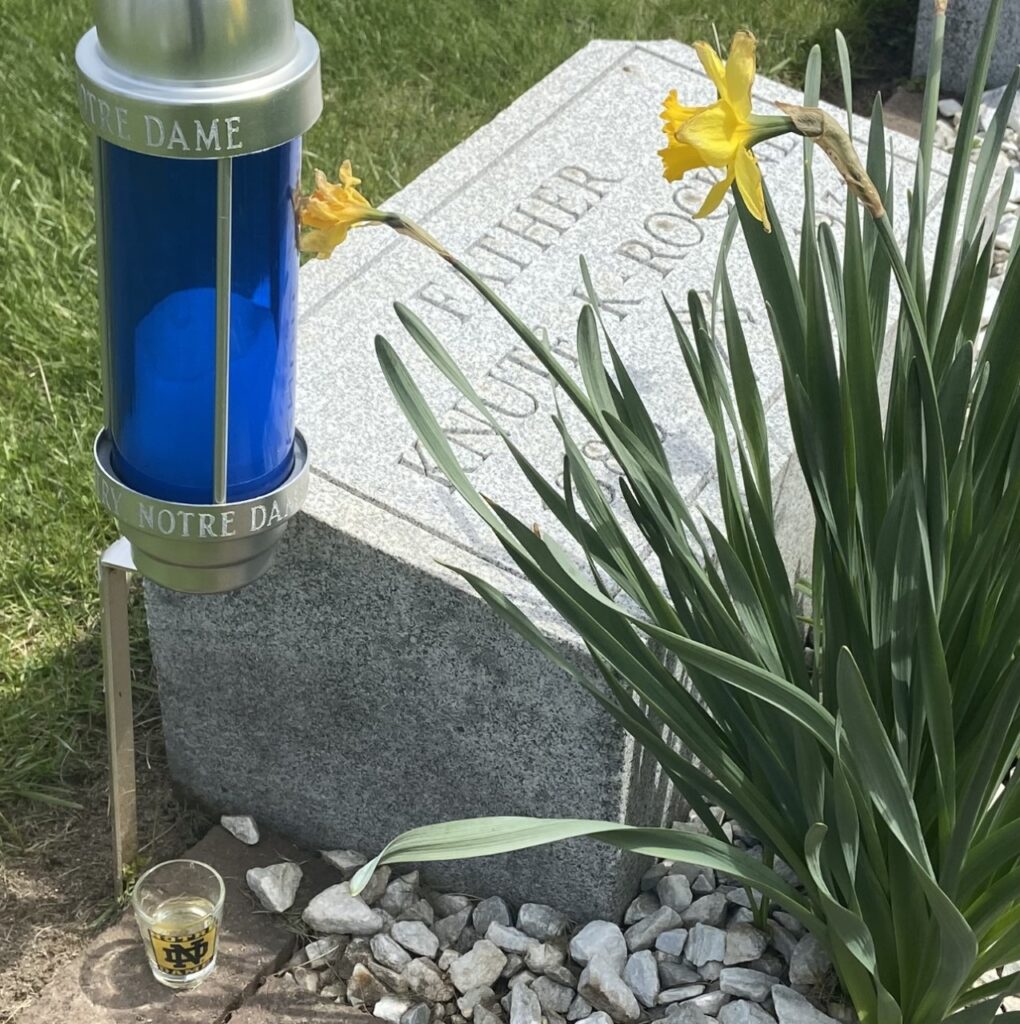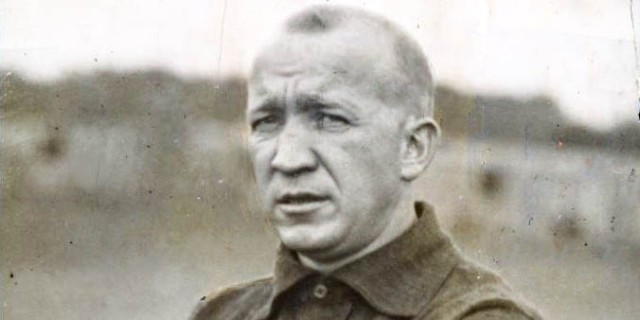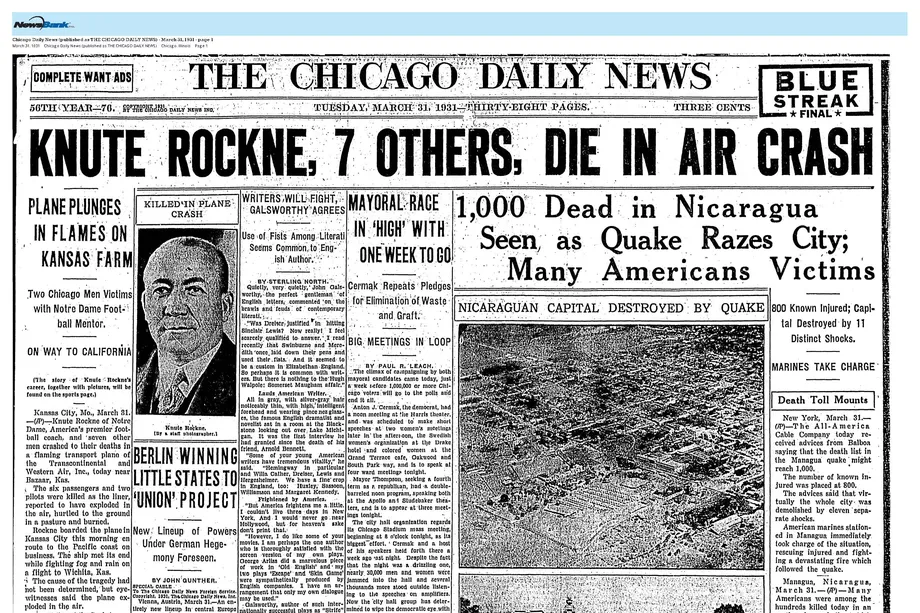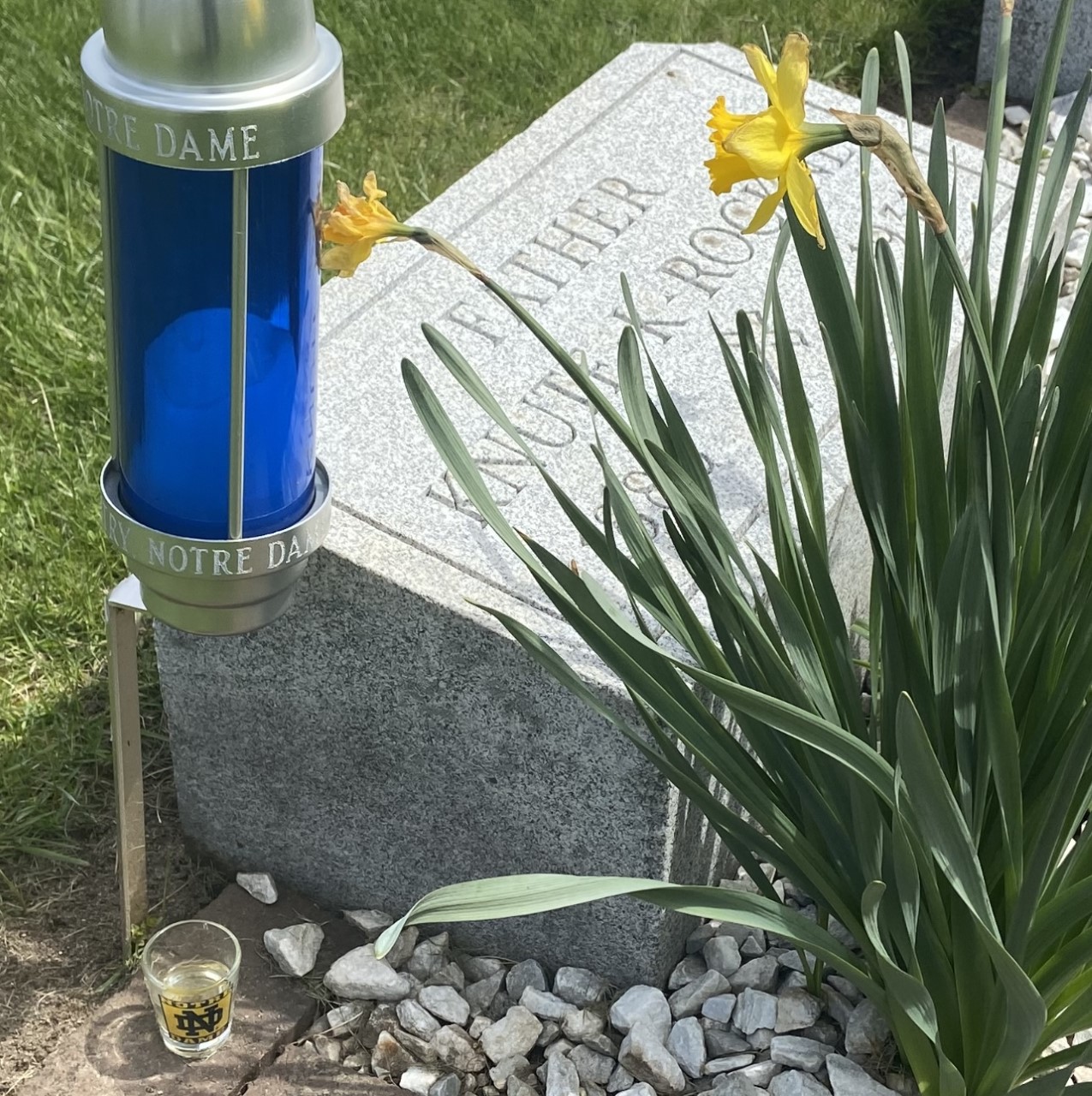
It was at a time when he and Babe Ruth were arguably the two most recognizable sports figures in America, when on March 31, 1931, Knute Rockne boarded a plane in Kansas City en route to Las Angeles. He was traveling there to consult on the making of the motion picture The Spirit of Notre Dame. A little over an hour later the plane crashed in a wheat field near Bazaar, Kansas, and Rockne was gone. He was just 43 years old.

Over 13 years in South Bend, Rockne led Notre Dame to a record of 105–12 and 5. His .881 winning percentage is the best in major college football history. He won three national championships, and had five undefeated seasons. Rockne’s biography at the College Football Hall of Fame includes the statement that he is “unquestionably American football’s most renowned coach”. He didn’t invent the forward pass but was responsible for turning it into a lethal weapon.
For the day, news of the crash spread quickly on radio and in “extra” editions of newspapers. The tragedy triggered an outpouring of grief that spread beyond the borders of the United States. President Herbert Hoover called the death a “national loss”. The King of Norway, where Rockne had been born, posthumously knighted the favorite son. For his funeral procession in South Bend, 100,000 lined the streets and an unheard of at the time, worldwide radio network broadcast the event.

Rockne was innovative not only as a coach but also as a shrewd promoter of the Fighting Irish brand. With a flair for showbiz and known for his charm with the media of the day, he curried favor for his team and was able to plant many seeds that sprouted into positive publicity for the Irish. During his tenure Notre Dame Football grew from a regional favorite to arguably the best known and beloved college football team in the Country.
Knute Rockne is buried in Highland Cemetery about 4 miles from “The House that Rockne Built”, Notre Dame Stadium. On game days it is not unusual for fans to leave a tribute of a shot of whiskey and a cigar, two of Rock’s favorites, on his grave. Such offerings speak to the lasting legacy of a man whose life still impacts the world 89 years after his tragic death.


